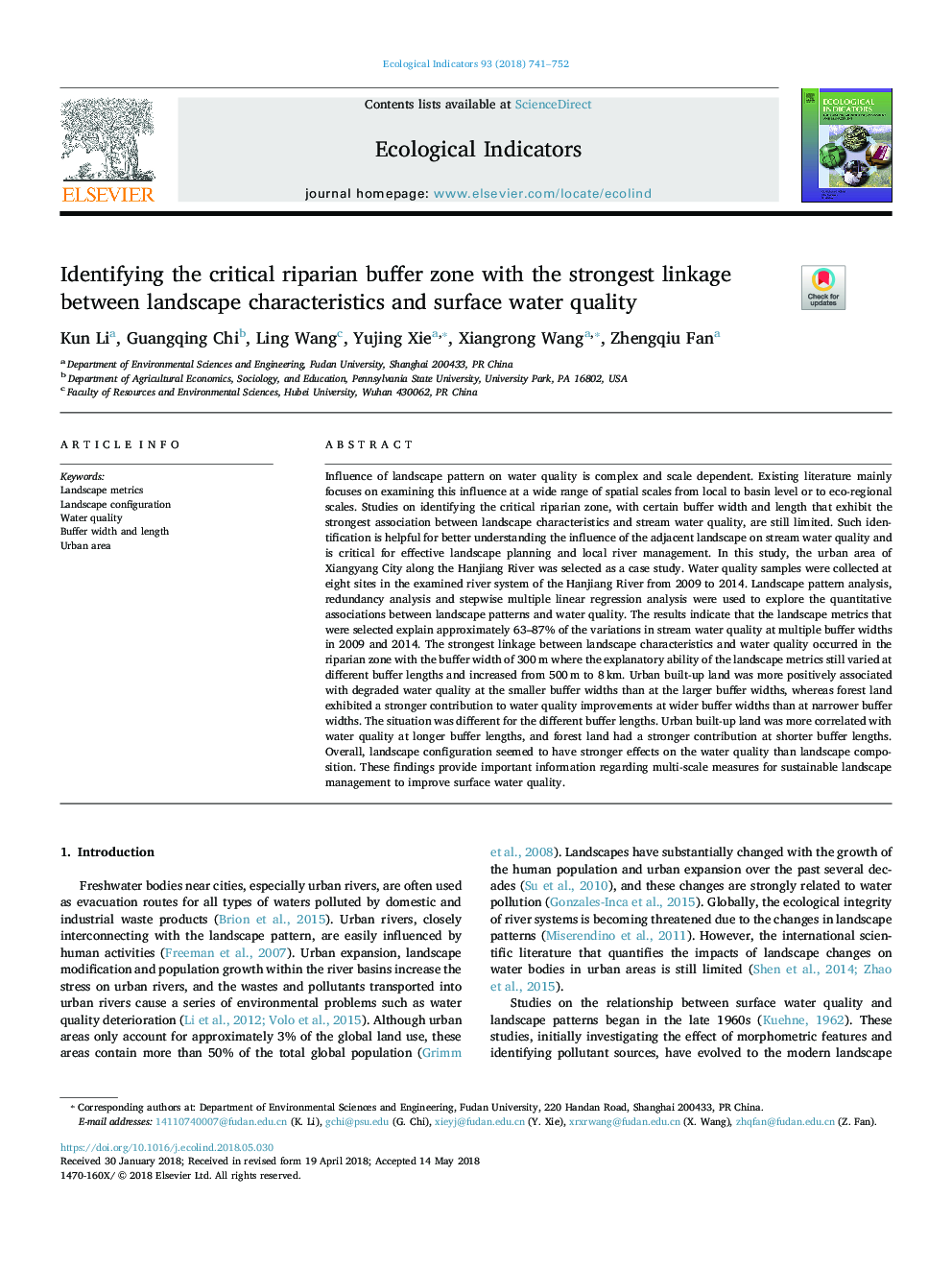| Article ID | Journal | Published Year | Pages | File Type |
|---|---|---|---|---|
| 8845213 | Ecological Indicators | 2018 | 12 Pages |
Abstract
Influence of landscape pattern on water quality is complex and scale dependent. Existing literature mainly focuses on examining this influence at a wide range of spatial scales from local to basin level or to eco-regional scales. Studies on identifying the critical riparian zone, with certain buffer width and length that exhibit the strongest association between landscape characteristics and stream water quality, are still limited. Such identification is helpful for better understanding the influence of the adjacent landscape on stream water quality and is critical for effective landscape planning and local river management. In this study, the urban area of Xiangyang City along the Hanjiang River was selected as a case study. Water quality samples were collected at eight sites in the examined river system of the Hanjiang River from 2009 to 2014. Landscape pattern analysis, redundancy analysis and stepwise multiple linear regression analysis were used to explore the quantitative associations between landscape patterns and water quality. The results indicate that the landscape metrics that were selected explain approximately 63-87% of the variations in stream water quality at multiple buffer widths in 2009 and 2014. The strongest linkage between landscape characteristics and water quality occurred in the riparian zone with the buffer width of 300â¯m where the explanatory ability of the landscape metrics still varied at different buffer lengths and increased from 500â¯m to 8â¯km. Urban built-up land was more positively associated with degraded water quality at the smaller buffer widths than at the larger buffer widths, whereas forest land exhibited a stronger contribution to water quality improvements at wider buffer widths than at narrower buffer widths. The situation was different for the different buffer lengths. Urban built-up land was more correlated with water quality at longer buffer lengths, and forest land had a stronger contribution at shorter buffer lengths. Overall, landscape configuration seemed to have stronger effects on the water quality than landscape composition. These findings provide important information regarding multi-scale measures for sustainable landscape management to improve surface water quality.
Related Topics
Life Sciences
Agricultural and Biological Sciences
Ecology, Evolution, Behavior and Systematics
Authors
Kun Li, Guangqing Chi, Ling Wang, Yujing Xie, Xiangrong Wang, Zhengqiu Fan,
